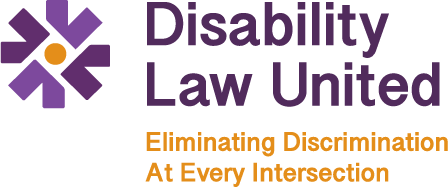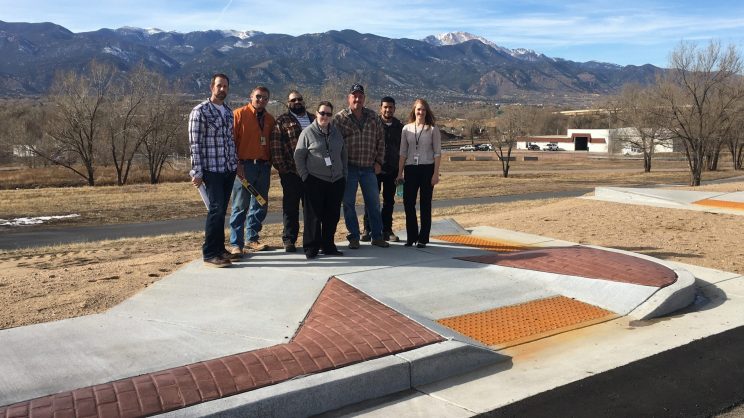Millions of Americans with mobility disabilities regularly use sidewalks to travel from home to work, school, the store, performance venues, sports stadiums, to visit family, or to access community gathering spaces. And yet, the corners of many city sidewalks across our country remain inaccessible, denying an entire group of people the right to move safely and freely from place to place.
Disability Law United’s Accessibility Project has taken action to improve curb ramps in a number of cities across the U.S. and has plans to address even more missing or inaccessible curb ramps in the coming years, making sure that city curb ramp programs comply with the requirements of the Americans with Disabilities Act (ADA) and Rehabilitation Act of 1973 (RA) as well as any similar state and local laws. In addition to ensuring that people with mobility disabilities can move freely about their communities, accessible curb ramps benefit others, including blind people, senior citizens, and people pushing strollers or pulling suitcases. Accessibility is a win-win for cities, for people with disabilities, and for people without disabilities. Check out this video about installation activities in Portland, Oregon.
Despite the ADA’s nearly 30-year history, curb ramp accessibility issues abound across the country. Common barriers include sidewalk corners with missing ramps; non-noncompliant ramp slope, surfaces or widths; and failure by cities to appropriately plan for remediation and installation of curb ramps. These barriers prevent people with disabilities from moving freely about cities where they live, work, or visit and can make navigating a city dangerous by, for example, leaving people with disabilities with no choice but to travel in the street.
Once Disability Law United has identified compliance issues with a city’s curb ramps, Disability Law United (often together with co-counsel) represents named claimants and a class of disabled people regarding these issues. Key to ensuring a city’s compliance with accessibility requirements is the willingness of the claimants to share their personal stories of encounters with missing and inaccessible curb ramps, along with their persistence to see the case through until all remedies are implemented. It is only with such determined and passionate advocates that Disability Law United is able to pursue these cases to successful resolution.
Generally, our clients are able to reach a settlement agreement with a city and enter a consent decree, making the agreement enforceable by a court. The decrees require cities to install and remediate thousands of ADA compliant curb ramps over multi-year periods. Disability Law United then stays involved with each city to monitor compliance with the agreement. While specific monitoring activities vary from city to city, common factors include reviewing data to ensure that the annual number of agreed upon installations/remediations is being met and that each ramp complies with all ADA requirements or fully meets the narrow exception to full compliance. In addition, we review whether a city’s curb ramp request system is working as agreed. As part of this process, we dialogue with cities about any unanticipated problems that may arise and work together to find solutions which are both creative and consistent with the agreement. Disability Law United is currently monitoring agreements entered by the following cities: Colorado Springs, CO, Denver, CO, Portland, OR, and Seattle, WA, and we’re investigating ramp accessibility issues in others. We anticipate that more agreements and monitoring will be coming soon!
This month Disability Law United’s Accessibility Project Director Martie Lafferty was pleased to visit Colorado Springs, meet with the enthusiastic city staff responsible for implementing the curb ramp program, and tour their unique curb ramp training facility. See photo. This outdoor facility contains several ramps, some compliant and some purposely noncompliant. These ramps give inspectors the opportunity to learn more about the ADA’s requirements and to test their assessment skills in a controlled environment.

